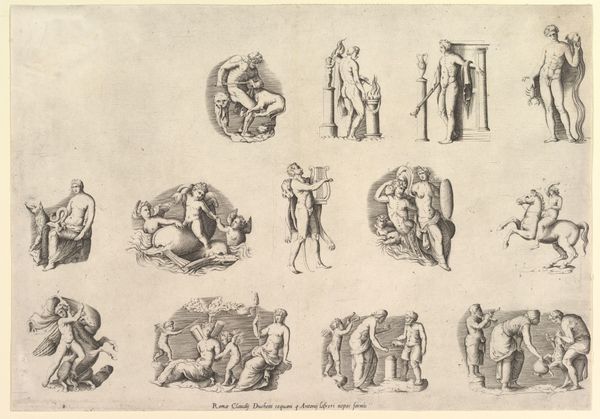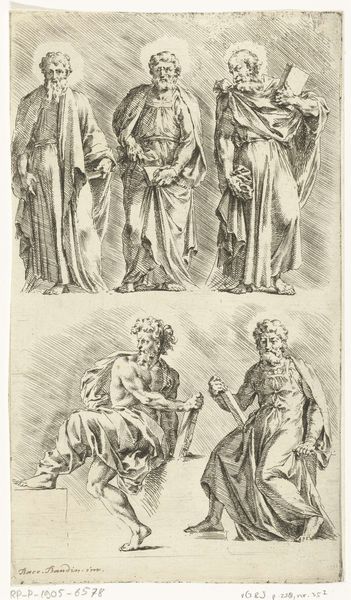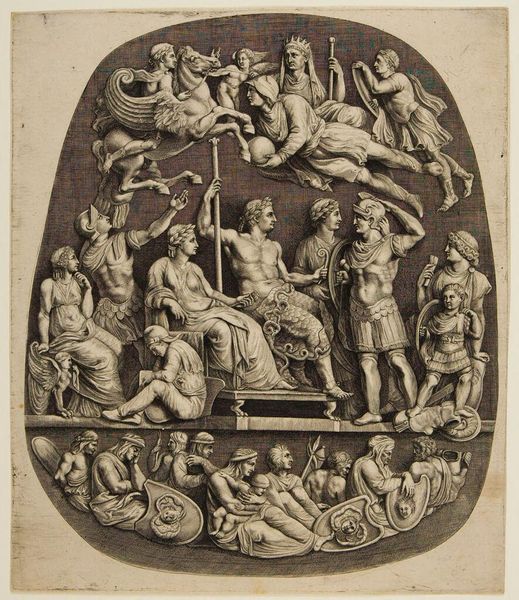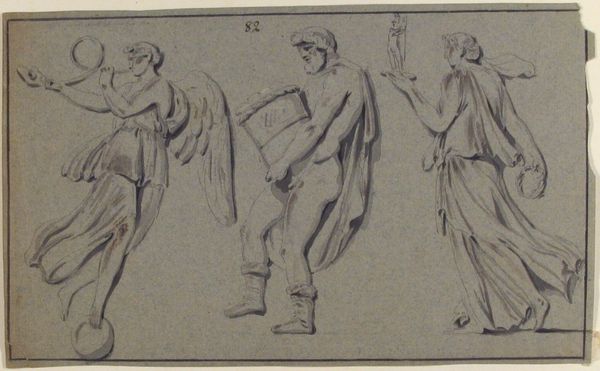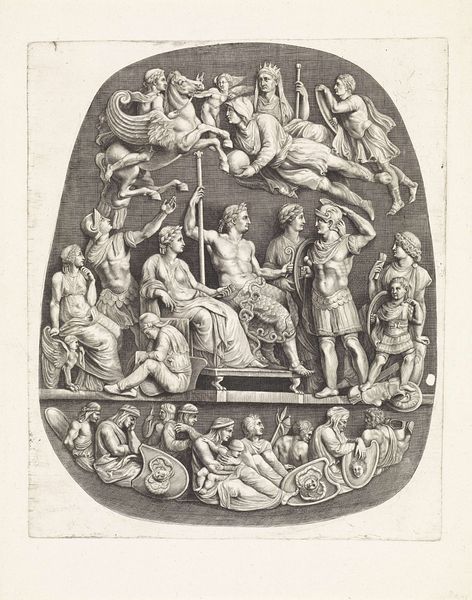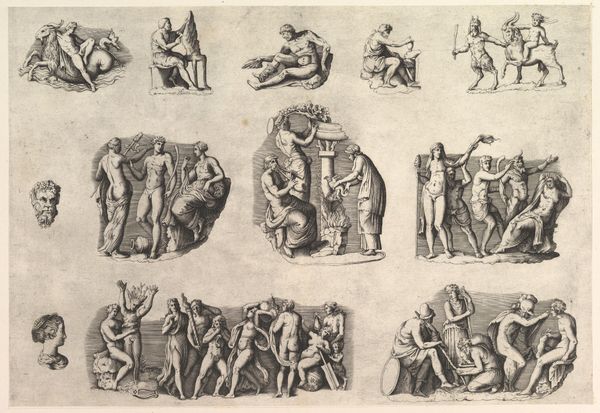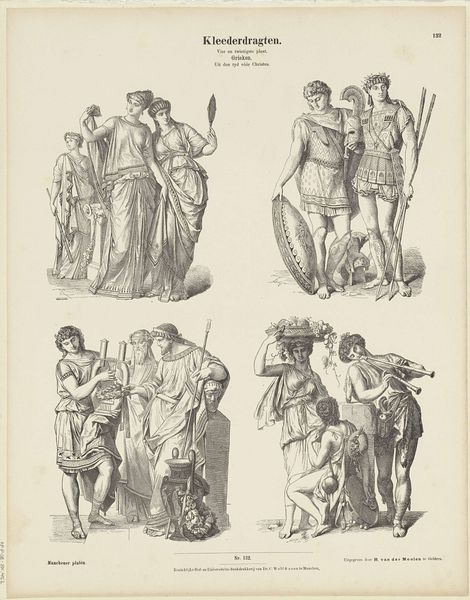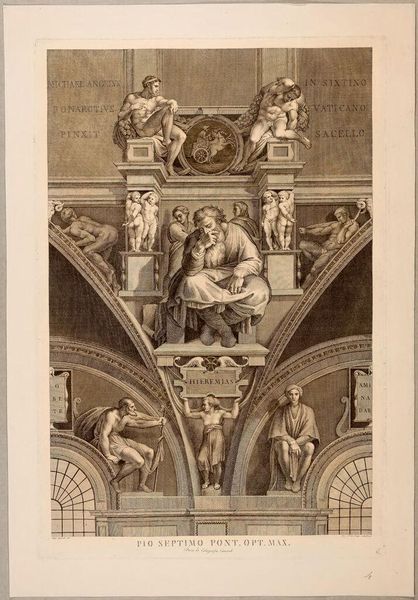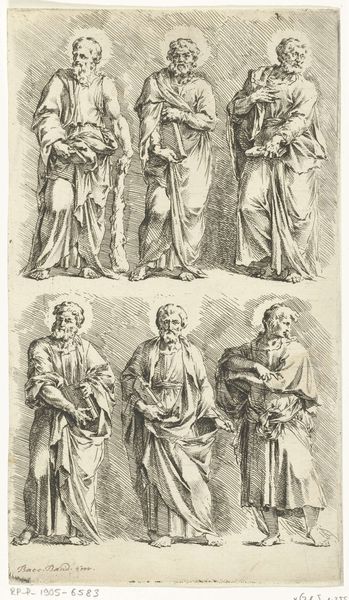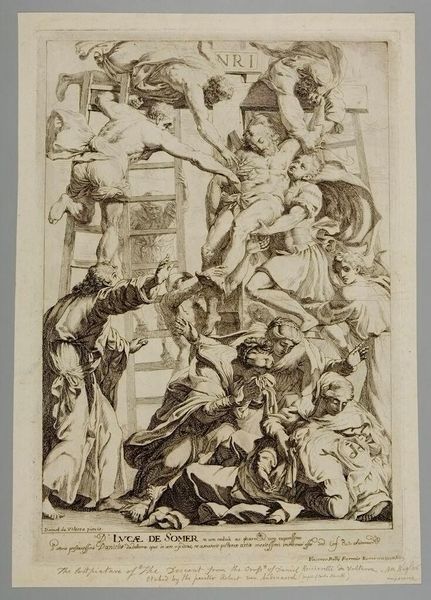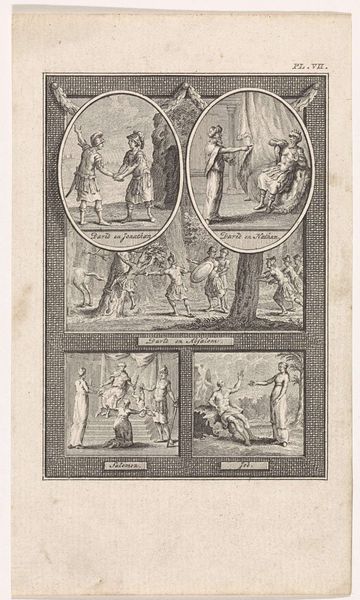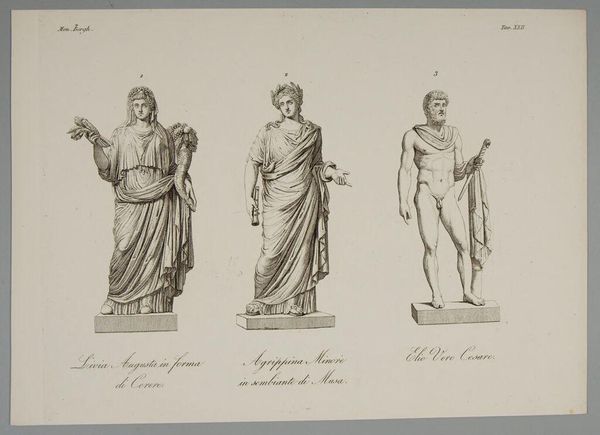
Galeriae Farnesianae: statues and wall paintings c. 17th century
0:00
0:00
Copyright: CC0 1.0
Editor: This is Pietro Aquila's "Galeriae Farnesianae: statues and wall paintings." It's undated, but Aquila lived from 1650 to 1700. It's fascinating how he depicts both sculptures and paintings from the Farnese Gallery in this print. What does this layering of reproduction say to you? Curator: It highlights the means of artistic production in the late 17th century. Engravings like this weren't just about aesthetic appreciation; they were commodities, facilitating the dissemination of classical imagery and the Farnese collection. Consider the labor involved, the accessibility it offered to a wider audience, and how that reshaped art consumption. Editor: So, it's less about high art and more about the system that circulates it? Curator: Precisely. The print challenges our notions of originality and value, forcing us to examine the social context and material conditions surrounding its creation and use. It's not just what's depicted, but how and why it was made that matters. Editor: I never thought of it that way! This changes how I see similar works.
Comments
No comments
Be the first to comment and join the conversation on the ultimate creative platform.
